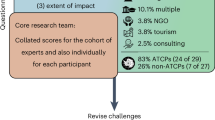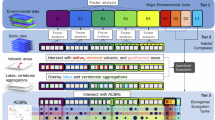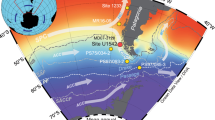Abstract
THE flora and fauna of Antarctica are often considered to be secure, principally because of international treaty obligations. Nevertheless, several people have already drawn attention to conservation problems1–3, which are underlined by my own work on the decline of the South Polar skua (Catharacta maccormicki) at Cape Hallett (lat. 72° 18′ S, long. 170° 19′ E).
This is a preview of subscription content, access via your institution
Access options
Subscribe to this journal
Receive 51 print issues and online access
$199.00 per year
only $3.90 per issue
Buy this article
- Purchase on SpringerLink
- Instant access to full article PDF
Prices may be subject to local taxes which are calculated during checkout
Similar content being viewed by others
References
Stonehouse, B., NZ Sci. Rev., 23, 3 (1965).
Shimoizumi, J., Antarctic Ecology (edit. by Holdgate, M. W.), 2, 946 (Academic Press, London, 1970).
Holdgate, M. W., Antarctic Ecology (edit. by Holdgate, M. W.), 2, 924 (Academic Press, London, 1970).
Eklund, C. R., Bird-Banding, 32, 283 (1961).
Reid, B. E., Notornis, 15, 193 (1968).
Reid, B. E., NZ DSIR Antarctic Div. Rep. (1961).
Maher, W. J., Nat. Hist., 75, 42 (1966).
Author information
Authors and Affiliations
Rights and permissions
About this article
Cite this article
JOHNSTON, B. Skua Numbers and Conservation Problems at Cape Hallett, Antarctica. Nature 231, 468 (1971). https://doi.org/10.1038/231468a0
Received:
Revised:
Issue date:
DOI: https://doi.org/10.1038/231468a0
This article is cited by
-
South Polar Skua breeding populations in the Ross Sea assessed from demonstrated relationship with Adélie Penguin numbers
Polar Biology (2017)
-
Behaviour and breeding success of gentoo penguins Pygoscelis papua in areas of low and high human activity
Polar Biology (2006)
-
Natürliche oder anthropogene Populationsveränderungen von Adéliepinguinen (Pygoscelis adeliae) im Ross-Meer-Sektor der Antarktis
Journal für Ornithologie (1978)



